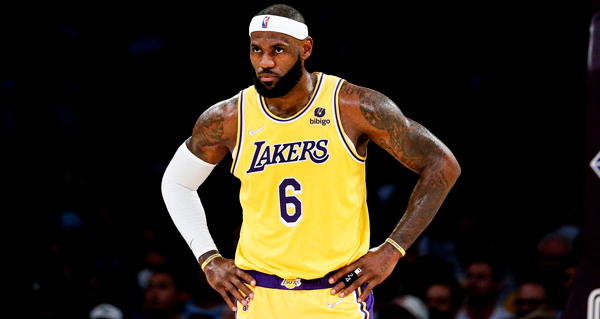There is a photo, gone viral, of LeBron James and Anthony Davis. It was captured near the end of their final victory in the NBA’s inaugural In-Season Tournament. With 1:10 to go and the clock stopped, their Los Angeles Lakers held a basically insurmountable 15-point lead, so the two superstars took it as a moment to revel in what they were about to accomplish. In the photo, they stand forehead to forehead, grinning maniacally, looking as if they’ve never achieved anything so regal, even though they won the NBA Finals just three seasons ago.
A rare burst of visible emotional glee from Davis, especially, the snapshot is an important bookend to the first lap of the sport’s new, seemingly successful experiment, and his full-bodied smile should wash away months of ridiculous speculation about whether the league’s most important players would “really care” about winning it all or not. Of course they cared! And of course the defensive, reactionary opposition to the very idea of this tournament was nothing but another sad reflex from the NBA’s hardcore, insular, race-to-the-bottom, hater-for-life fanbase, hellbent on the impossible goal of alienating newcomers from engaging with the game that they love, which is too beautiful for such limitations.
Their farting protest is over, now, save for the stragglers committed enough to their omerta to fully die on their poorly chosen hill. The rest of NBA culture will follow its most iconic active player into these fresh horizons. This conclusion is gathered more clinically than from branded optimism, though, and to extend this analysis into the armchair businessman category would be to fall prey to the same silly trappings that too much of the sport’s coverage is now dominated by. You do not need, here, another analyst grasping at macroeconomic straws, making false deductions from hazy statistics when the real measurements for whether this was a financial success exist behind the curtain.
The point is that the players, in caring as much as they did, reminded us that they are no kin to the change-hating curmudgeons who role-play at gatekeeping the global entertainment product they love to be so salty and cynical about. Basketball is fun and cool, and here comes another way in which it can be both of those things—garish court designs notwithstanding. The dubious color choices of those gave the peanut gallery sufficient turds to lob, particularly when bright red was involved in the mix. Please, powers that be, do not repeat these blaring, honking monstrosities! Hedge, instead, toward the milder regions of the color wheel—seen on Milwaukee, Minnesota, and San Antonio’s bespoke courts—so that our eyes might know peace.
Our ears were challenged, too, by the novelty of meaningful neutral-site games. The Lakers fanbase is both ubiquitous and very close to Las Vegas, so their rabble could be heard, but when the Bucks and Pacers squared off on Thursday afternoon, it was all too apparent that two midwestern teams had only booked their tickets to the desert days prior, and that their enthusiasts did not have nearly enough of a heads-up to follow them there. Fans of football (a sport that is, among other things, an event sequence with optimized scheduling) are accustomed to fusing their rooting and their tourism every autumn and winter, and while such behavior is an appealing wrinkle in a potential future vision for the NBA, it isn’t going to happen like this. A juiced-up, non-partisan crowd is a fun concept that may come to fruition in subsequent chapters of the NBA Cup, as it has from time to time during Vegas’ Summer League exhibitions—and as it sometimes does at All-Star weekend—but it remains theoretical, for now. Moneyed, clout-chasing crowds make good noise on fight night, but in basketball it still usually takes an earthier sort to get the decibels going.
It would appear that the NBA knows that they’re just getting started with this thing, in any event, and that the shape of Vegas to come is as of yet unknown. But what seems increasingly clear is that, a decade-or-less down the line, we’ll hardly know what it was like before the word “Vegas” had the connotation it’s already begun to take on in basketball context. Here we are, at the start of something, which one of the greatest players of all time felt strongly enough about to make it an important conquest in his shockingly lengthy farewell cruise. One can easily imagine a LeBron who, while now too physically limited to roll through four seven-game series in the Spring, is still masterful enough to hold down Vegas over a series of early-season, single-game showdowns for years to come. This would make the tournament, if nothing else, a glorious way to say goodbye.



